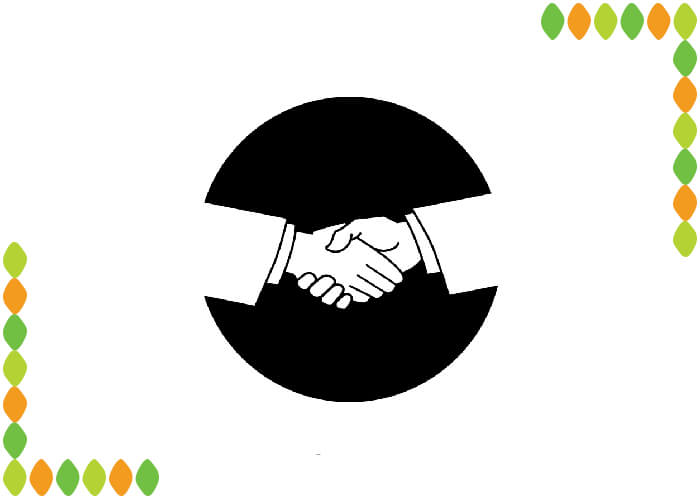The board game industry has seen a massive surge in the past few years, especially because of the pandemic, and now we have access to thousands of board games each so different than the other. A problem that some picky players may have is choosing something to play among an ocean of games they may have no idea about. A great way to find new board games for your taste is to find similar games to the ones you love. This is where board game genres come to use.
There are so many ways to group different board games, but the methods I think are most effective, are Categories and Mechanics. Here we’ll go over the most popular categories and mechanics in board games, and we’ll see a few examples for each.
Categories
1. Bluffing

Bluffing games are among the most popular games for families and newbie gamers. It is something that people naturally catch on to quickly. It’s not really difficult to teach most people to lie. And most people like to be free to lie and manipulate others in a safe environment without any real consequences.
The Sheriff of Nottingham is a popular bluffing game where players must attempt to smuggle illegal goods to their shops without the sheriff finding out. Another example would be Coup, a little fun card game where players each get some character cards and use their powers to eliminate opponents. But, because the cards are secret, anyone could claim they have any character and it’s up to the players to find the liars.
2. Civilization

Civilization games are mostly heavier games and require more time and thinking. In these games players usually start with a very basic settlement and must try to progress their community in different areas throughout the eras in the game. Civilization games, in my opinion, are the best games to try to show your friends who’s boss, because they are so wide and need the most strategic thinking.
The classic Civilization by Sid Meier is probably the best example of this category that both board game and video game players love. Through the Ages is another fan-favorite civilization game and one the best games to get familiar with this category.
3. Deduction

Deduction games are another type of games that most players like and enjoy. These are games that require players to draw conclusions based on available facts. I say available because usually in deduction games players have secret information. They must use this information to find out about other players while trying not to let others find out about them. These are the games that keep everyone on the edge of their seat until the end when everything is revealed and everyone takes a deep sigh.
Games like Mafia or Werewolf are the most mainstream deduction games. Players are divided into two teams. A majority of unaware players, and a minority of aware ones. Aware means that they have info that others don’t, like they know who their teammates are. The team who is unaware must try and deduce who the opposing players are, and eliminate them from the game. Most games set in the Sherlock Holmes world also require players to find a series of clues and use them to solve a mystery.
4. Dexterity

While most games provide mental problems for players, there are some games that challenge manual dexterity and coordination. These are games that don’t need players to think, they need them to do. Whether it’s balancing something or trying to do something fast, dexterity games are perfect for an adrenaline rush in between games.
IceCool is a dexterity game for two to four players, where players are penguin students and must try to run from the hall monitor. Players must move their penguins throughout the different rooms on the game board by flicking them with their fingers. But it’s not as simple as that; the game provides some instructions on how to flick the penguins so you can manipulate its course. Junk Art is another dexterity game where players make modern art exhibitions using wooden components in various shapes and sizes. There are many different scenarios to play in Junk Art, but they all rely on your ability to stack random stuff on each other.
5. Negotiation

One of the biggest advantages of board games is their social aspect and how players interact with each other throughout the game. One of the best categories for player interaction is negotiation. It is so popular that many games include some negotiation in them, even though it’s not the main category. You can learn a lot about players by trying to negotiate with them. Some players, like myself, always prefer to keep things civil and make a good deal. But some players just wanna watch the world burn. They make no deals just out of spite and competitiveness, and that’s actually a good strategy. A game with a good mix of both players will make some of the most fun moments in your board game nights.
Cosmic Encounter is a great example of negotiation games. In the game players are different alien races trying to inhabit foreign planets by fighting, or by making deals. Catan is another classic game of negotiation where players must collect resources and build their land. But getting resources from the game isn’t always easy, and players must trade with each other to go forward in the game.
Mechanics
1. Action Points

In some games, players are given a certain amount of action points and must use them to perform actions. The actions each have a cost, some low and some high, and it’s up to the player to choose the best actions available.
Pandemic is a classic example of action points. In Pandemic players have a choice between eight different actions, but they only get four action points each round, so each player performs four actions in any way they want. A similar game is Flash Point, where players get action points according to their character and previous turns, and the actions have different costs.
2. Area Control

Many games have a board or map with several areas or regions, and players compete with each other over the control of these areas. This could give them victory points, resources, actions, or general benefits.
Risk is one of the oldest examples of area control games where players play on a map of the world and constantly battle with each other over territories and countries. The goal of the game is to have the most territories. Another example is Ethnos, where players use the power of mythical creatures to gain influence in one of six available regions in the game. At the end of each of the three eras regions give points to the player with the most influence in them.
3. Deck-Building

Deck-building games are some of the most enjoyable and innovative games out there. In these games, players each get a deck of cards that they use in various ways. Usually, the starting deck of players isn’t very strong, and players must purchase and add cards to their decks. This is different from simply purchasing an action card. You are actually adding the card to your deck, making your deck more powerful in future turns, which is the most important thing.
The Quest for El Dorado is a game where players are leaders of an expedition team and race to find the lost treasures of El Dorado. The characters on your expedition team are shown on cards and each player gets a starter deck of these characters. But in order to advance quicker than opponents, players must purchase other stronger characters to add to their deck to use until the end. It even has an action where you can remove a card from your deck. What good is this? If you remove your weaker cards from your deck, the stronger ones are more likely to draw them.
4. Legacy

Legacy games are especially unique compared to more conventional board games. They are games that can only be played once. That’s right. Throughout the course of the game players will stick stickers, draw or write on cards, or even rip and tear components. This is the main reason they can only be played once, because they are practically destroyed. But normally they are long campaign games that can be played in more than one session. Also, they have stories and narratives behind them, and once you know the story, it’ll be less fun to play a second time.
The Pandemic Legacy Trilogy is the most popular and loved legacy games of all time. They follow the core gameplay of Pandemic, but in different eras with new rules and components being added each episode.
5. Semi-Cooperative

You can probably guess what cooperative games are – games where all players are on the same team and try to win against the game itself. So what are semi-coop games? They are games where players are sometimes on the same team. For example, in Betrayal at House on the Hill is a semi-coop game where players take the role of a curious group exploring a haunted house as a team. The game has two phases; the first is players searching around the house and trying to get stronger. Until the second phase begins; the betrayal. At a certain point in the game, we find out that one of the players is a betrayer, determined by the game’s journal. This is where teamwork turns into one-against-all. The fun part is the betrayer doesn’t even know who they are until the second phase. So everyone must consider the possibility that they are the betrayer. This is why we call it semi-coop.
Another example would be The Dead of Winter, where players live in a zombie-infested city and must work together in a colony to overcome the zombies and the extreme cold of the winter. In this game, players each get a secret objective at the beginning of the game, and there could be a betrayer card between them. So players must work together knowing the fact that one of them might be on the other side.
Final Thoughts
There are multiple ways to categorize board game genres, but these are the ones most gamers refer to. These are just a handful of different categories and mechanics in board games, and the list goes on. Let me know if this post helped you learn more about board games, and what other categories or mechanics you love.






